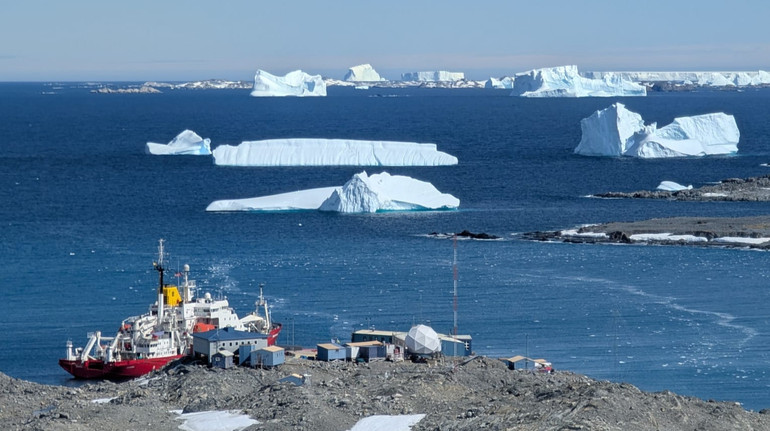Polaris have removed the rare optical effects over Antarctica

View of the Academic Vernadsky Research Station
Photo: Nanz
Ukrainian polarists from the Academic Vernadsky Research Station recorded interesting optical effects on the video – two Pargelia (false sun) and a complete Pargelic Circle.
These unusual paintings in the sky « draw » rays of light and ice crystals, Note at the National Antarctic Scientific Center.
Pargeli is small spots located on the side of the real sun, on one level with it. And the Pargelic Circle is a line that runs through the sun, Pargelia and all the sky parallel to the horizon. This spectacle is compared to the wedding ring that lies in the sky.
According to scientists, before the appearance of these optical effects, they also noticed around the sun a 22-degree halo, which disappeared quite quickly and did not have time to get on the video.
« All these effects belong to the Galov family-an optical phenomenon in the atmosphere, manifested as a secondary glow. It occurs due to the refraction and reflection of the sun in the ice crystals. Such crystals are usually located in camouflage or perishable-shaped clouds or hanging lower in the frost-and-pole.
Depending on the form of crystals and rays trajectories, various forms of halo are formed. Most often you can see the circular halo around the light source – sun, moon or even lanterns. Pargeli, Parselens (from the moon), anti -aircraft arcs or light columns – explain in NAC.
Most often, the varieties of halo are observed in the polar regions, but sometimes they can be seen in other latitudes.
Scientists explain that the full Pargelic circle is a rare and extremely complex atmospheric phenomenon. It is due to the combination of several optical processes: reflection of light from the outer surface of ice crystals and multiple (sometimes up to five times) refraction of light inside them. Each section of the parcel circle is formed as a result of a certain mechanism responsible for reflection or refraction of light rays.
The polarists also explained why circular galos and Pargeli were mostly placed at a distance of 22 degrees from the Sun.
« Under standard conditions, crystals have a hexagonal shape. Each crystal acts as if the prism: the beam goes through one face, and it turns out – through the other, refracted by 22 degrees.
If the crystals are thick and plate, then the first Pargels can create the following – at a distance of 44 degrees (also very rare) « , » – scientists said.
Earlier to Ukrainian scientists in Antarctica managed to fill humpback whale, which « breaks out » from the ice water of the frosty continent.







